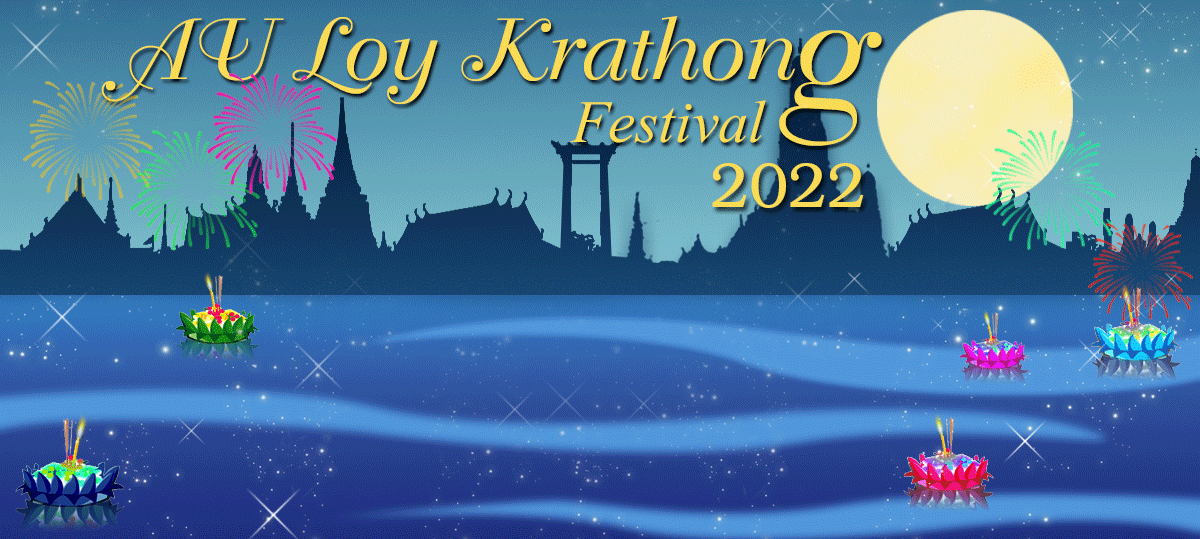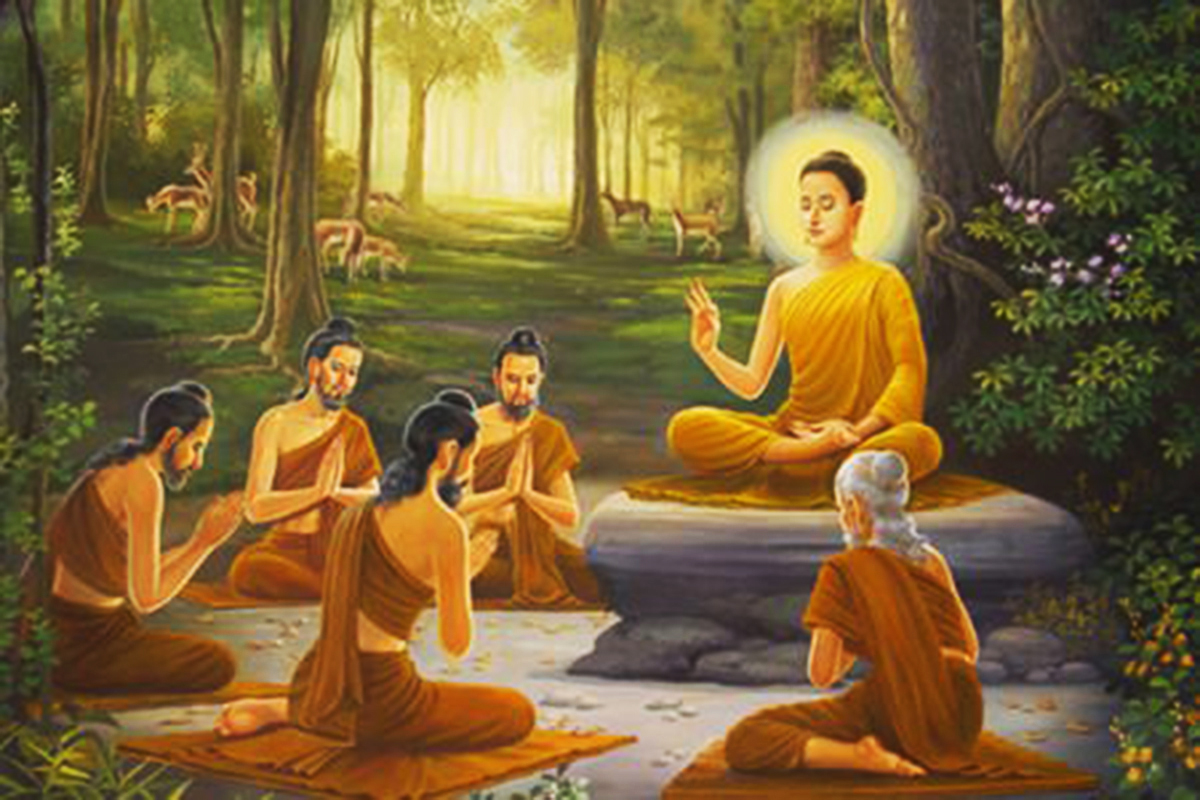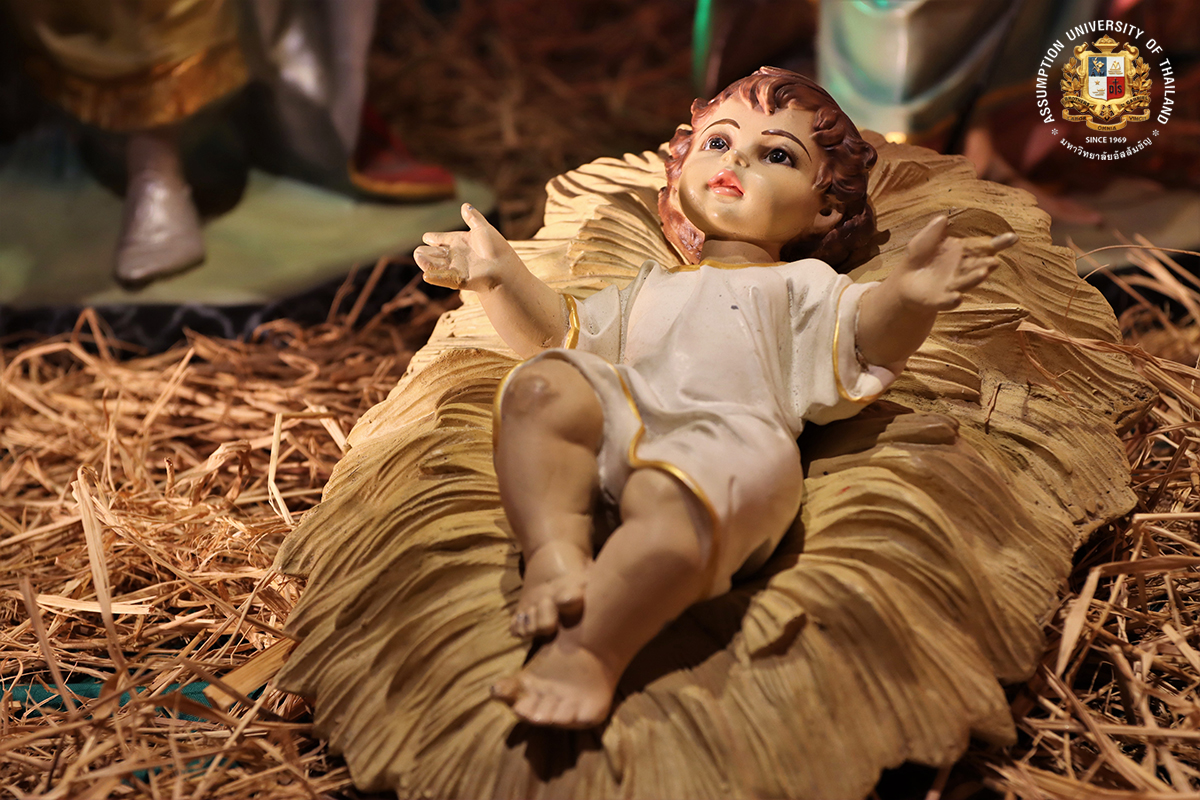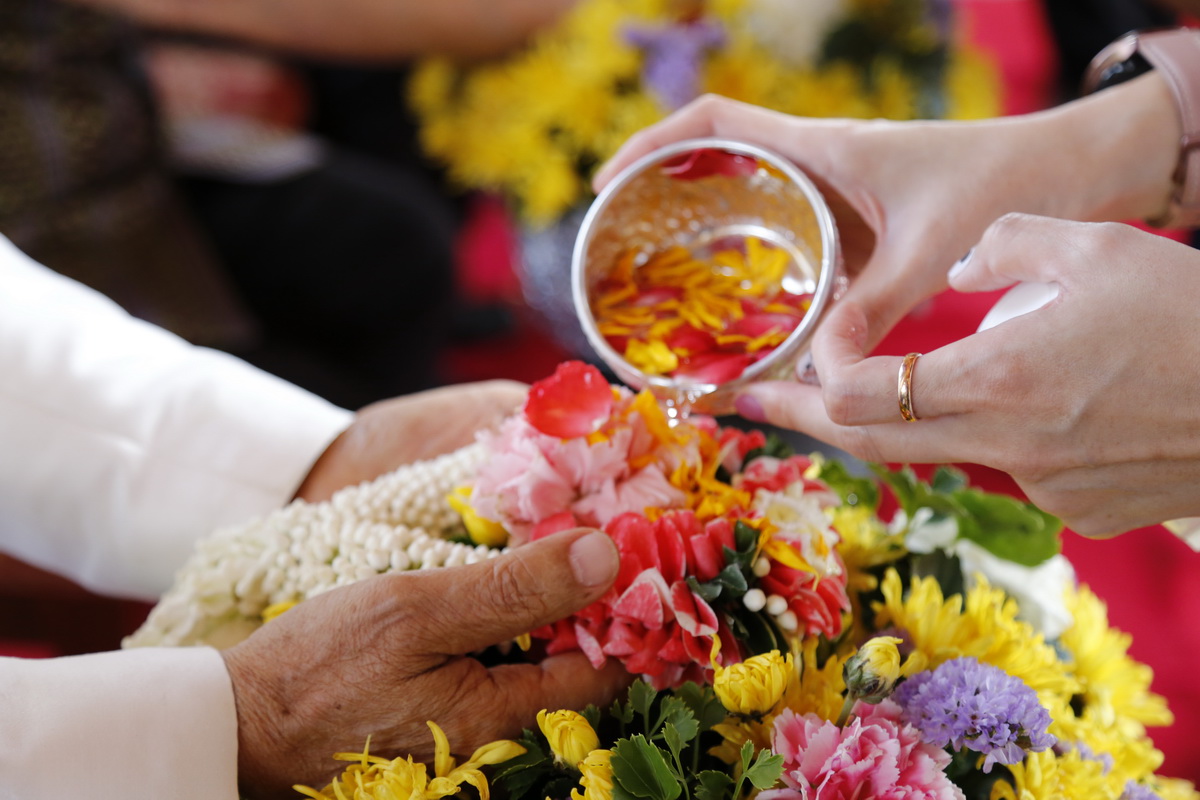On November 7, 2022, Assumption University Student Organization (AUSO), Assumption University of Thailand(AU) organized AU Loy Krathong 2022 at Sala Chaturamuk Paijit and in front of the Cathedral of Learning Building, Suvarnabhumi Campus. The objective of Loy Krathong 2022 are 1) To comply with the University's policy to preserve and disseminate Thai arts and culture. 2) To disseminate Thai culture to both Thai and foreign students.
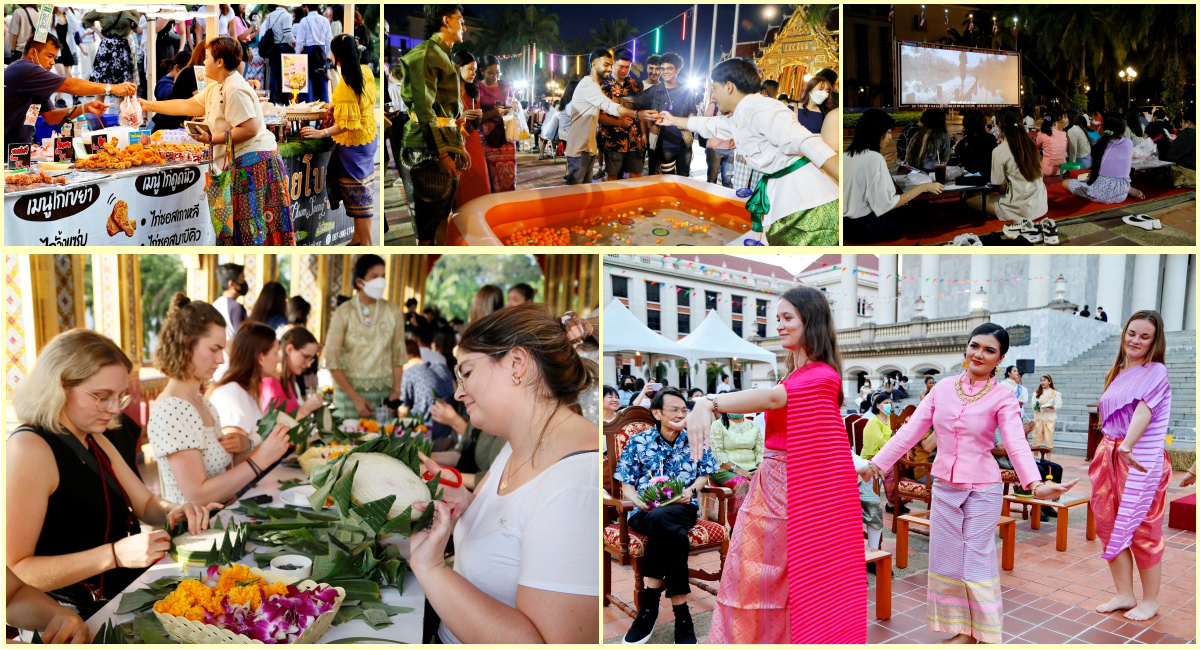
This year, Loy Krathong activities are consisting of food and beverage booth, Thai traditional games booth, Outdoor cinema, a Krathong making workshop, and also Thai classical dance.

Miss. Surakkhaniya Surakkhaka (นางสาวสุรักขนิยา สุรักขกะ) and Miss. Latishalynn Liu (รติชาลินน์ หลิว) are the master of ceremony. AU President, Rev. Bro. Dr. Bancha Saenghiran presided over the event. The AU administrators, faculty members, staff, and students expressed their respect and thanks to the River Mother by floating the Krathong.

On November 8, 2022, the Office of the Vice President for Administrative Affairs organized activities to Preserve Thai Culture and Care for the Environment (สืบสานวัฒนธรรมไทย ใส่ใจสิ่งแวดล้อม) on the Loy Krathong Day at Sala Chaturamuk Paijit, Hua Mak Campus. Rev. Bro. Dr. Achin Tengtrakul, Vice President for Administrative Affairs gave the opening speech and led the AU Community to float the krathongs (lotus-shaped boats of banana leaves) onto the AU Lake.
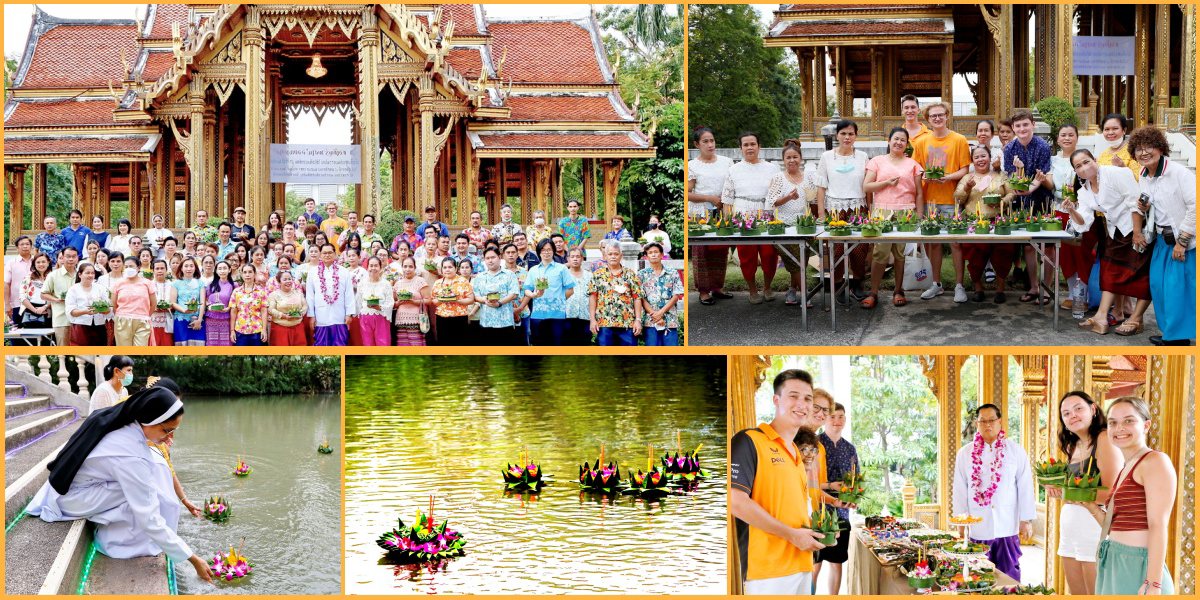
What is Loy Krathong?
The meaning of "Loy" itself means "To Float” while "Krathong" means “Leaf Cup,” a lotus like blossom made of banana leaves, and people float a Krathong decorated with candles and flowers onto the water. The Thais believe this is a way to rid oneself of bad luck and negative feelings, and to bring good luck and positive feelings. Loy Krathong, one of the most picturesque festivals in Thailand, dating back to the reign of King Ramakhamhaeng of Sukhothai over 700 years ago. This charming and festive ceremony is observed in the countryside and in the cities. The celebrations are a national event in Thailand, and it is sometimes referred to as the “festival of lights,” celebrated every year to thank the Goddess of Water.
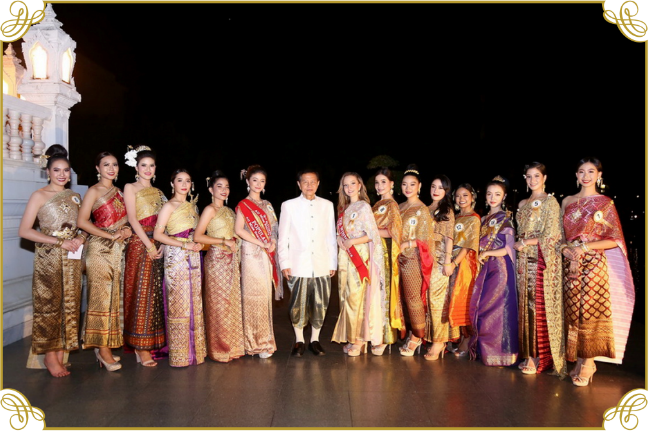 The Loy Krathong Festival is said to have been originated by Nang Nophamas, one of King Ramakhamhaeng's ladies-in-waiting who was later to become a principal minor wife. To please the King during his river cruises, Nang Nophamas who was well versed in all the arts and sciences, prepared a lantern of rare beauty and originality in the form of a lotus flower adorned with birds carved out of fruit, and a candle. She floats it away on the night of the full moon of the twelfth lunar month when the water rose high. King Ramakhamhaeng viewed the lanterns for the contest and was especially impressed by the lotus lantern made by Nang Nophamas. He was so pleased by her explanation of the design that he decreed that from that day forward the Buddhist Holy Day on the night of the full moon of the lantern Festival - lantern should be made in the shape of the lotus and floated on the river to pay homage to the Lord Buddha. The Lantern Festival Krathong Festival from then on. It was told that this ceremony of offering first appeared in the reign of a great Sukhothai ruler, believed to have been King Ramkhamhaeng. It began when a young maiden by the name of Nang Nopamas wished to honour the water spirits during the festivities which marked the end of the rainy season. The daughter of a Brahmin priest at the King's court, she followed her father's tradition by making a delicate' float to offer to Mae Khongkha. It was Nang Nopamas who first crafted a float in the shape of an open lotus flower. As an act of respect, she offered the Krathong to the King, who accepted and floated it down the river. This attractive manner of offering greatly appealed to the people of Sukhothai, who repeated the festival manually. In time it became integrated into Thai culture, perpetuated for centuries to this day. The legendary Nang Nopamas is represented each year by a beautiful young woman, selected to reign over the festivities, practice particularly popular at universities.
The Loy Krathong Festival is said to have been originated by Nang Nophamas, one of King Ramakhamhaeng's ladies-in-waiting who was later to become a principal minor wife. To please the King during his river cruises, Nang Nophamas who was well versed in all the arts and sciences, prepared a lantern of rare beauty and originality in the form of a lotus flower adorned with birds carved out of fruit, and a candle. She floats it away on the night of the full moon of the twelfth lunar month when the water rose high. King Ramakhamhaeng viewed the lanterns for the contest and was especially impressed by the lotus lantern made by Nang Nophamas. He was so pleased by her explanation of the design that he decreed that from that day forward the Buddhist Holy Day on the night of the full moon of the lantern Festival - lantern should be made in the shape of the lotus and floated on the river to pay homage to the Lord Buddha. The Lantern Festival Krathong Festival from then on. It was told that this ceremony of offering first appeared in the reign of a great Sukhothai ruler, believed to have been King Ramkhamhaeng. It began when a young maiden by the name of Nang Nopamas wished to honour the water spirits during the festivities which marked the end of the rainy season. The daughter of a Brahmin priest at the King's court, she followed her father's tradition by making a delicate' float to offer to Mae Khongkha. It was Nang Nopamas who first crafted a float in the shape of an open lotus flower. As an act of respect, she offered the Krathong to the King, who accepted and floated it down the river. This attractive manner of offering greatly appealed to the people of Sukhothai, who repeated the festival manually. In time it became integrated into Thai culture, perpetuated for centuries to this day. The legendary Nang Nopamas is represented each year by a beautiful young woman, selected to reign over the festivities, practice particularly popular at universities.
Loy Krathong Tradition
Loy Krathong Tradition is a ceremony to honor the Goddess of the river. In Thailand, it is annually held on the full moon day in November. Krathongs are small vessels or cups often made of cut banana stems, leaves containing flowers, candles and joss sticks. They are released into the rivers and left to float downstream. Upon releasing the Krathongs, people ask for forgiveness from the Goddess of the river for polluting her. It is one of the important religious customs in Thailand. During this period, at the end of the rainy season, most areas around the rivers and canals are flooded.
This occurrence sparked an old Thai popular saying: in the 11th lunar month there is flooding and in the 12th lunar month and the (stagnant) flood waters are retreating. This period is a time for rejoicing as the weather is changing for the better. The rainy season is more or less over and the winter or cool season is beginning. The moon is also at its brightest this time of the year. At present, Loy Krathong Tradition is a major celebration in Thailand.
Objectives
The objectives are various depending on different customs and beliefs.
- To pay homage to the Lord Buddha who descended from the second heaven (where Indra dwells) and where he preached a sermon to his royal mother (after staying in a Buddhist monastery during the Buddhist lent).
- To pay homage to the Lord Buddha's Foot Print on the bank of the Nammatha River in India.
- To pay homage to the heavenly Pagoda containing the Lord Buddha's top knot cut off at his self-ordination.
- To pay tribute to the senior disciple Upakut who found his recluse in the ocean (a belief inherited from Myanmar; the priest had supernatural powers in conquering the God of Evil).
- To pay homage to Narai Banthom Sin; Hindu God Vishnu, slumbering in the ocean.
- To pay homage to God Phaka Prom living in the third heaven.
- To worship the Goddess Mae Khongkha, the Mother of Water, asking for forgiveness for polluting her.
- To float one's sufferings away, this practice is similar to the Sin Floating Rite of Brahmin.
- To ask for blessing.
- To be reminded of the benevolence of the ancestors.
Loy Krathong Tradition: Expression of Gratitude
Thai people express their gratitude to the Goddess of Water for nourishing their lives by celebrating the Loy Krathong festival. However, depending on beliefs, the Loy Krathong festival is also celebrated to express gratitude to the Lord Buddha or paying homage to the ancestors. To make a long story shorter, it can be said that Loy Krathong Tradition is about expressing gratitude.
Values of Loy Krathong Tradition
- Family Value: relationships between family members are tightened as family members are celebrating together.
- Community Value: communities are more harmonious by joining in the Loy Krathong activities.
- Social Value: raising awareness in water resources conservation.
- Religious Value: Buddhist practices such as merit making, practicing dharma and listening to sermons are essential parts of Loy Krathong celebration; therefore, they contribute to strengthening religious beliefs.
Activities that should be promoted
- Clean up the rivers, both before and after Loy Krathong celebration.
- Perform good deeds, listen to sermons, and practice the dharma.
- Utilize local bio-degradable materials in making the Krathongs.
- Promote the proceedings of Krathong parade.
- Promote alternative activities such as a Krathong Contest, Hot-air Balloon Contest and others. Presently, the Noppamas Queen contest (The daughter of a Brahman priest and a lady at the Court of King Phra Ruang of Sukhothai, who developed a new style of lotus flower which were to be floated on the streaming waters at night to please the King) is a new, but indispensable feature.
- Release Krathong into the rivers.
- Release hot-air balloons (mainly practiced in the north).
- Fireworks are, however, discouraged in order to avoid hurting people or damaging properties.
- Participatory cultural activities in local communities.
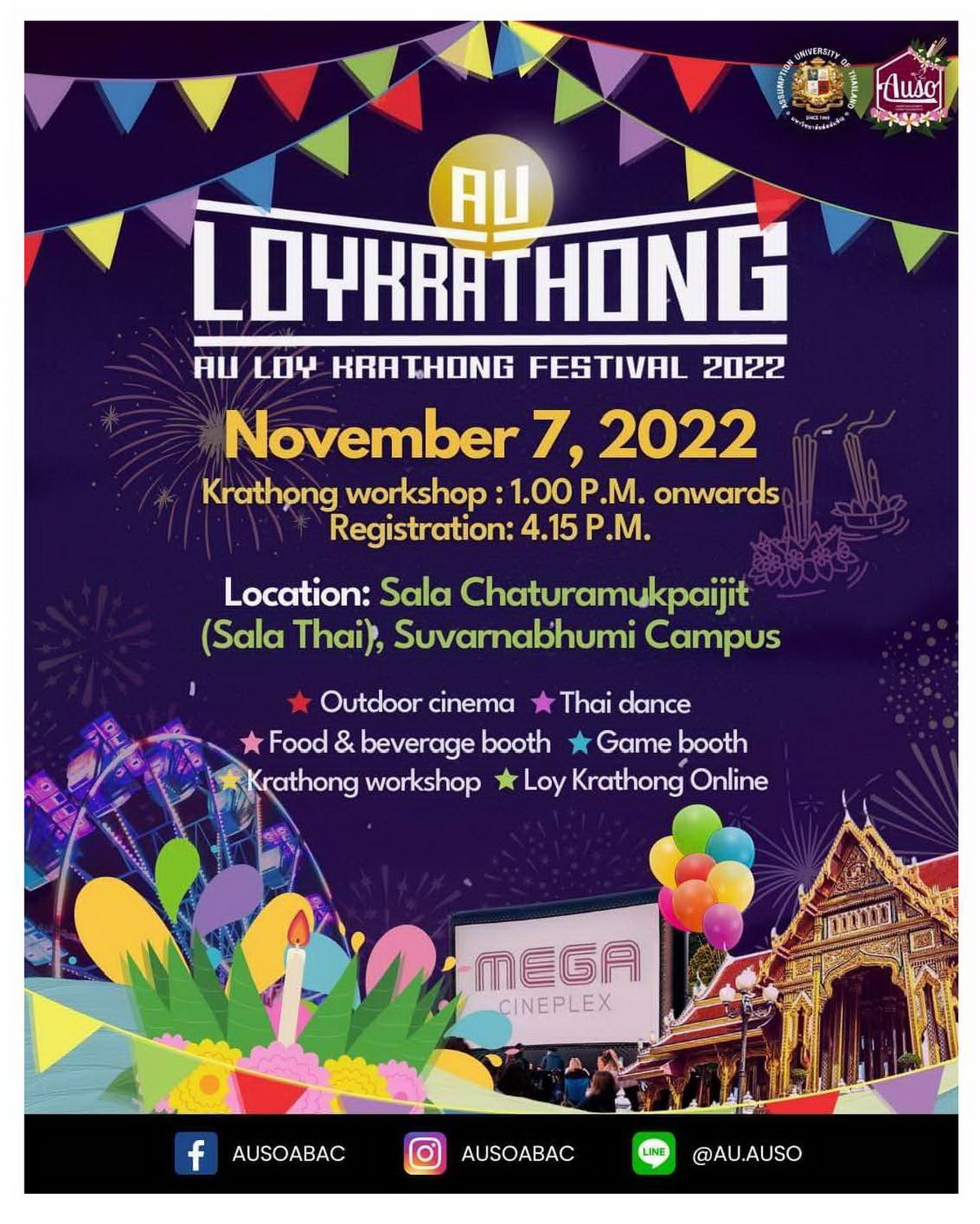
Agenda (Thai version) 
First organized Loy Krathong Celebration @ABAC
ABAC Loy Krathong Celebration was firstly organized on October 31, 1982 at Dr.Choop Plaza, Hua Mak Campus, then known as Assumption Business Administration College (ABAC). In preserving and promoting this popular Thai tradition, ABAC President, Rev. Bro. Dr. Prathip M. Komolmas, presided at the event. Administrators, faculty members, staff, and students expressed their respect and thanks to the River Mother by floating the krathongs at the pond. Also a joyous tradition, live music by a string combo of ABAC students, Noppamas Queen and Krathong contests added fun and festivity to the event.
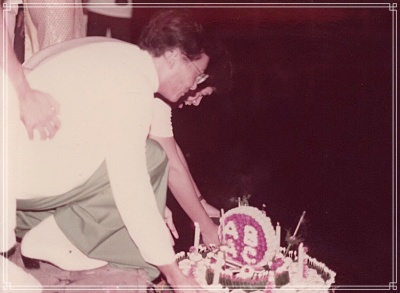 |
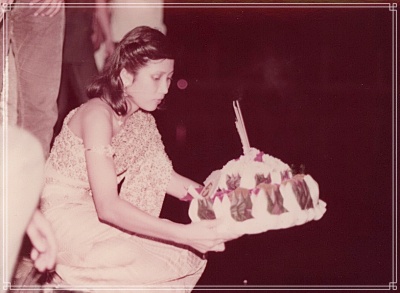 |
Loy Krathong Celebration at Suvarnabhumi Campus
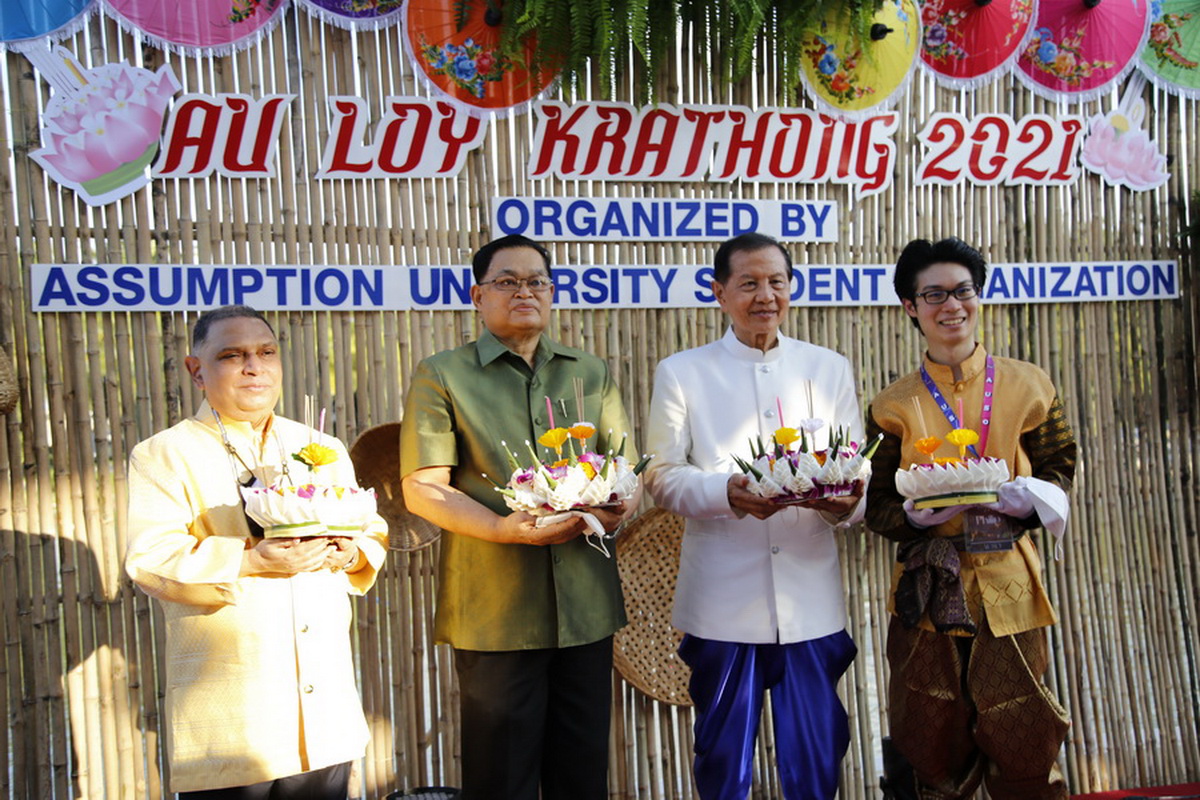 |
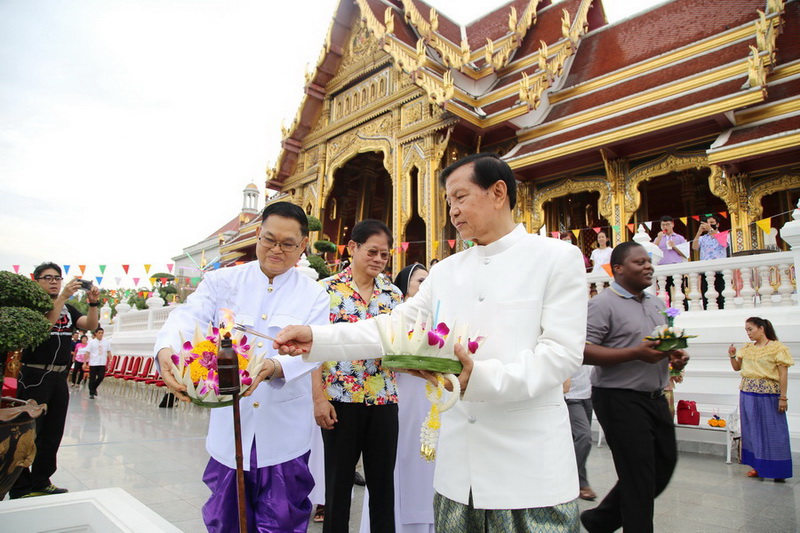 |
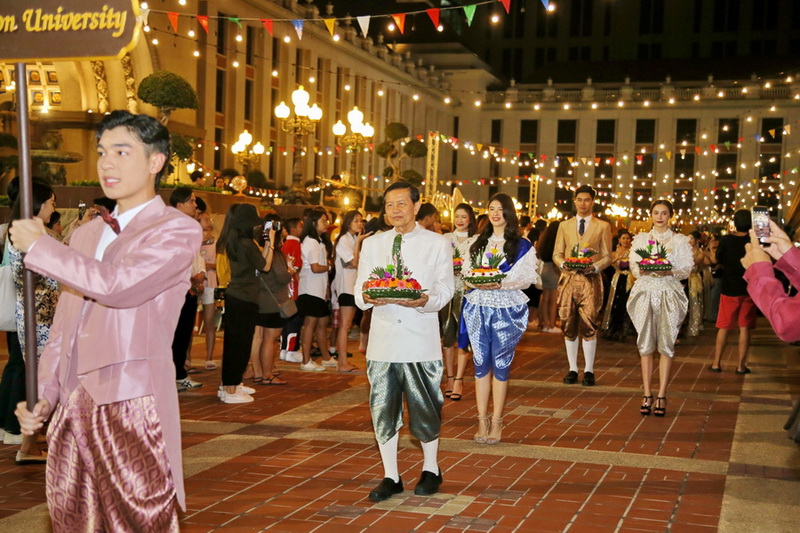 |
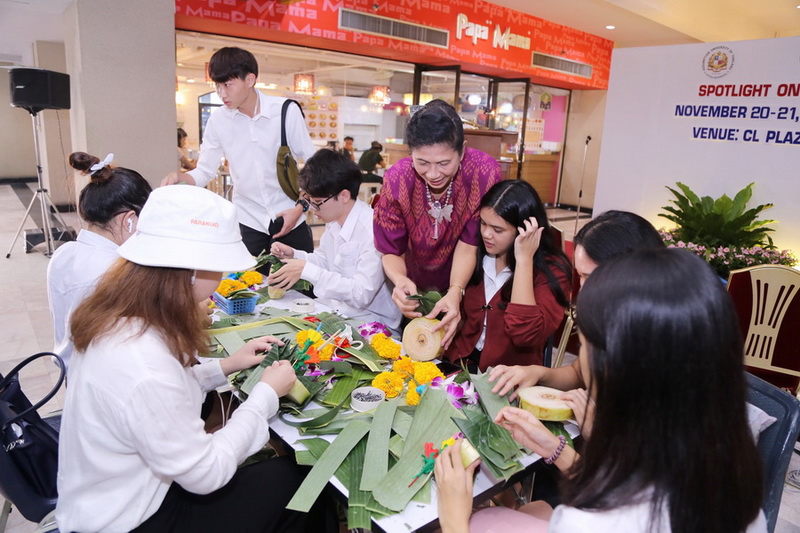 |
| 2021 | 2020 | 2019 | 2018 |
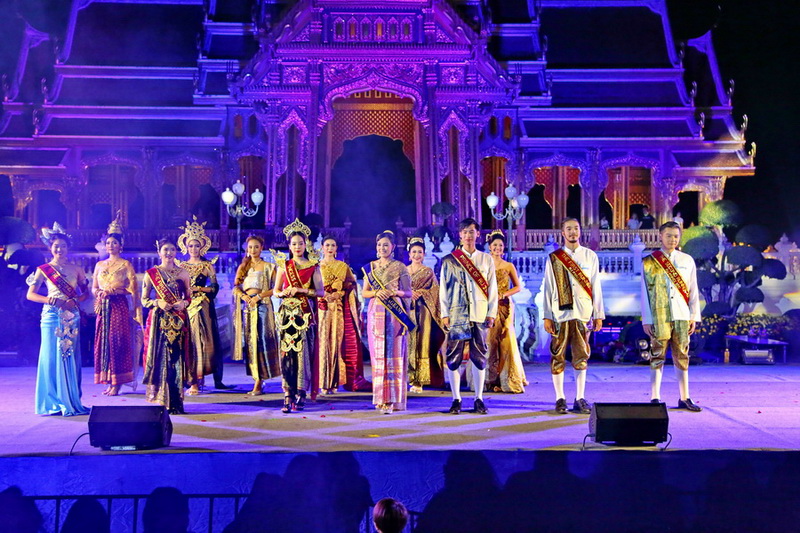 |
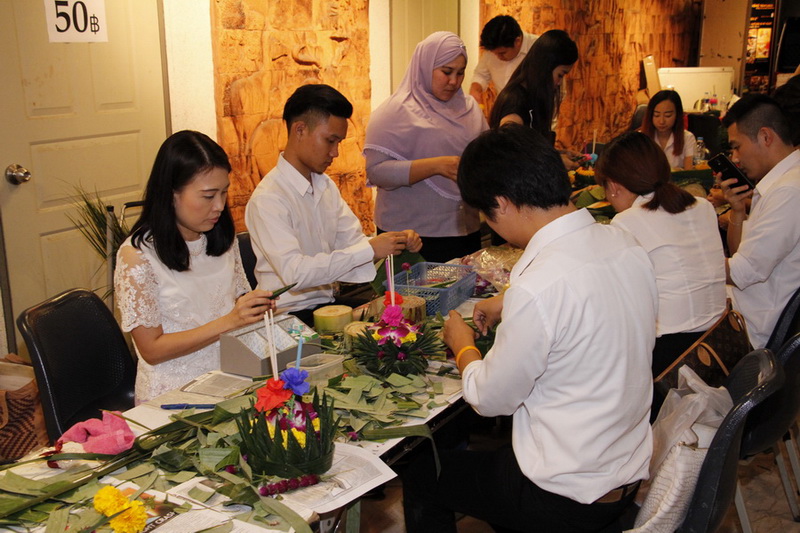 |
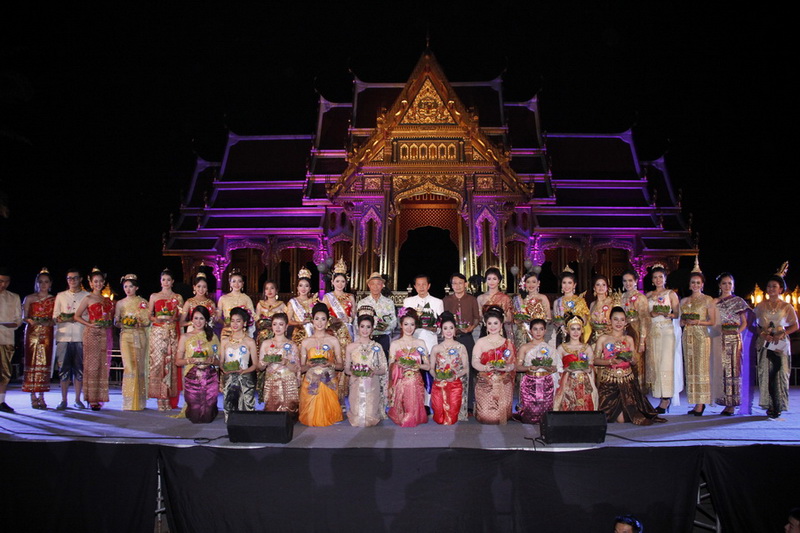 |
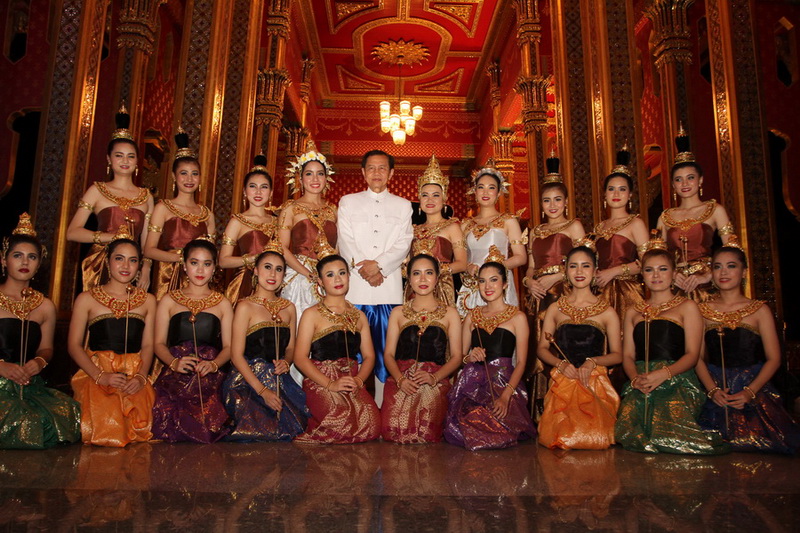 |
| 2017 | 2015 | 2014 | 2013 |
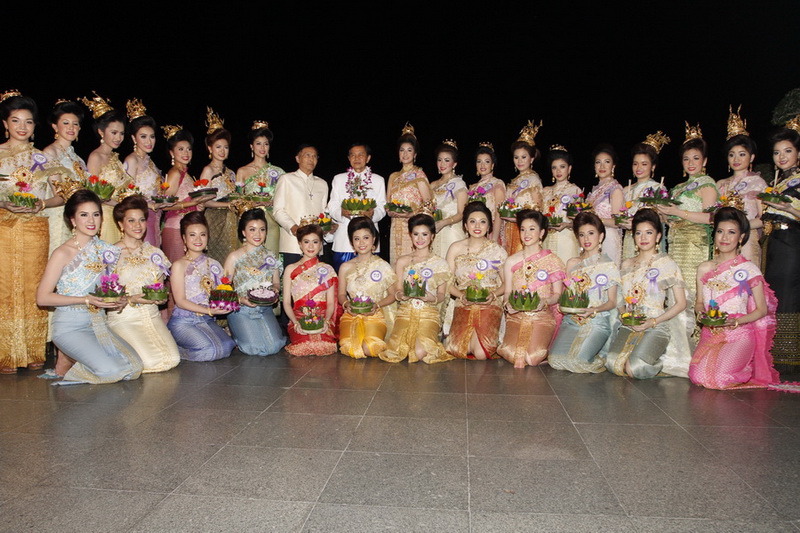 |
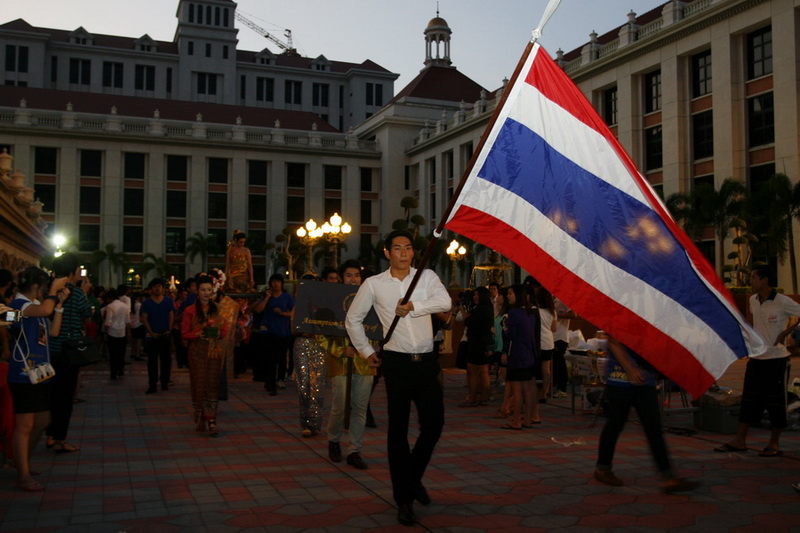 |
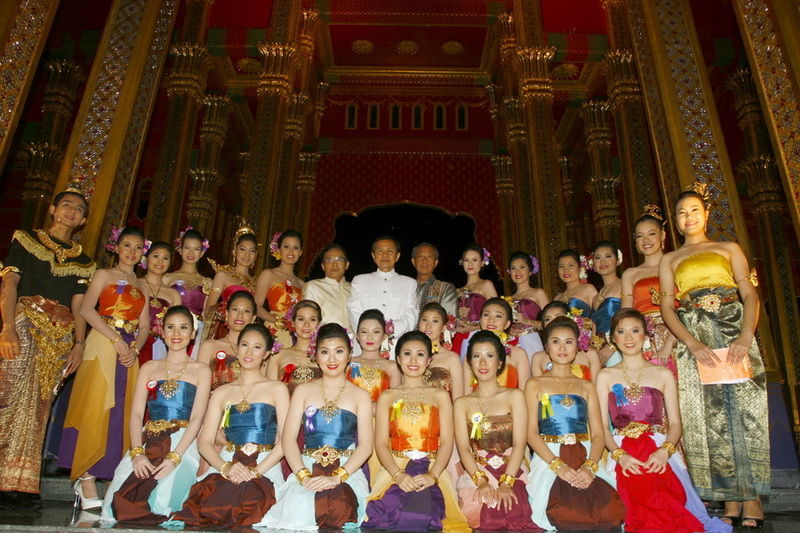 |
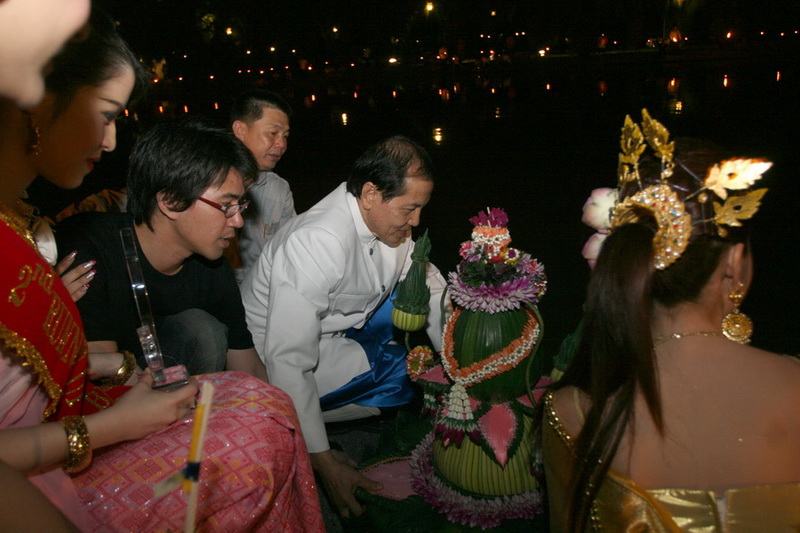 |
| 2012 | 2010 | 2009 | 2008 |
Loy Krathong Celebration at Hua Mak Campus
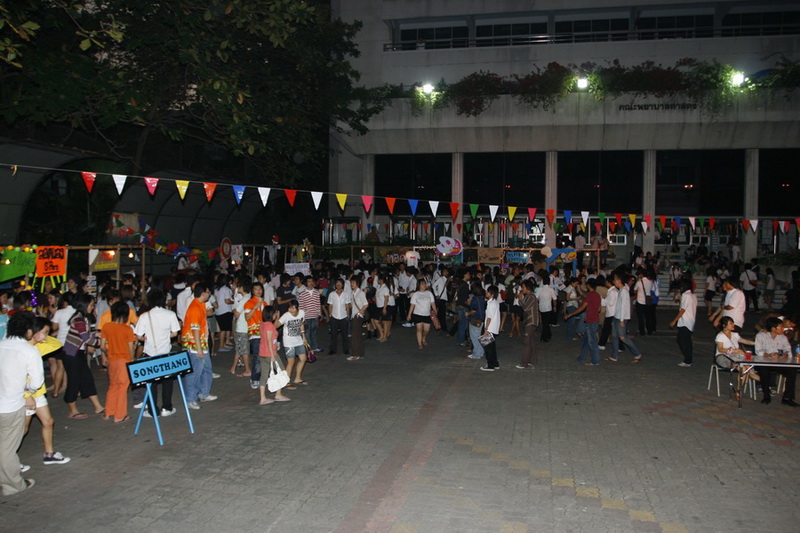 |
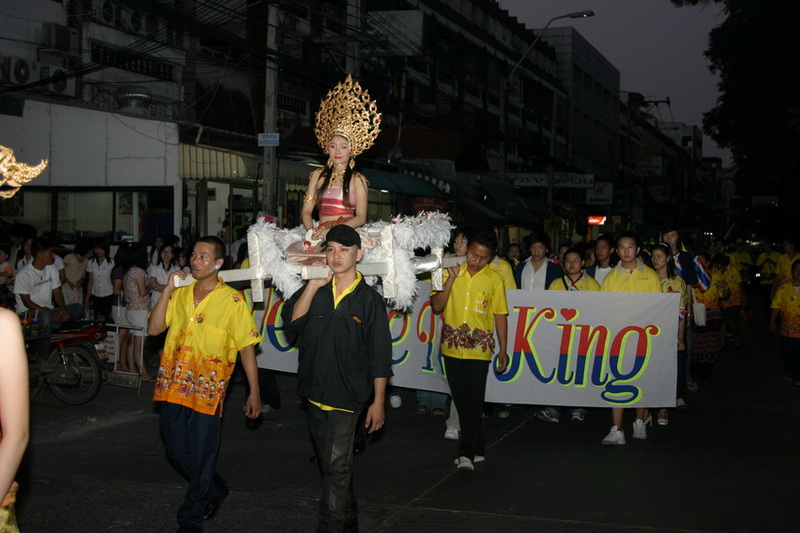 |
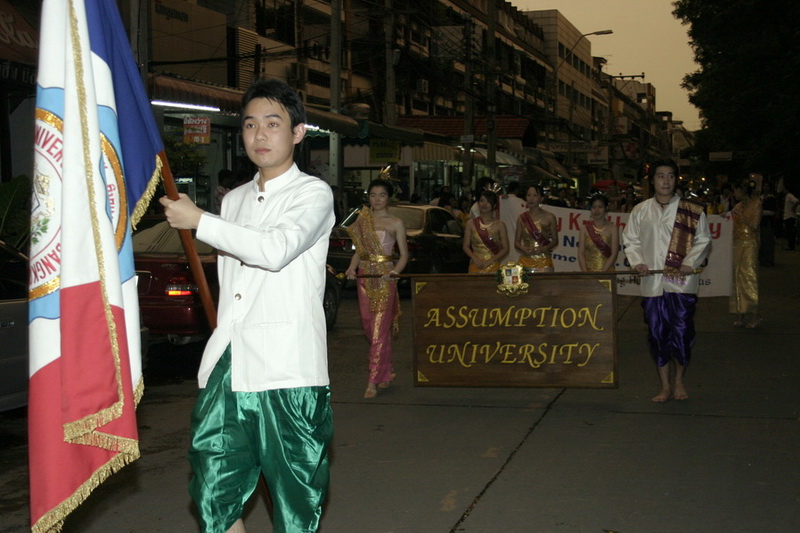 |
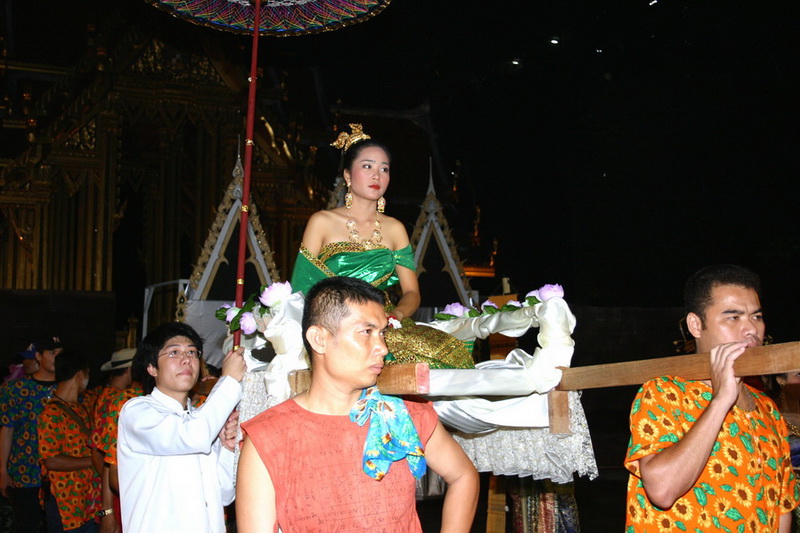 |
| 2007 | 2006 | 2005 | 2004 |
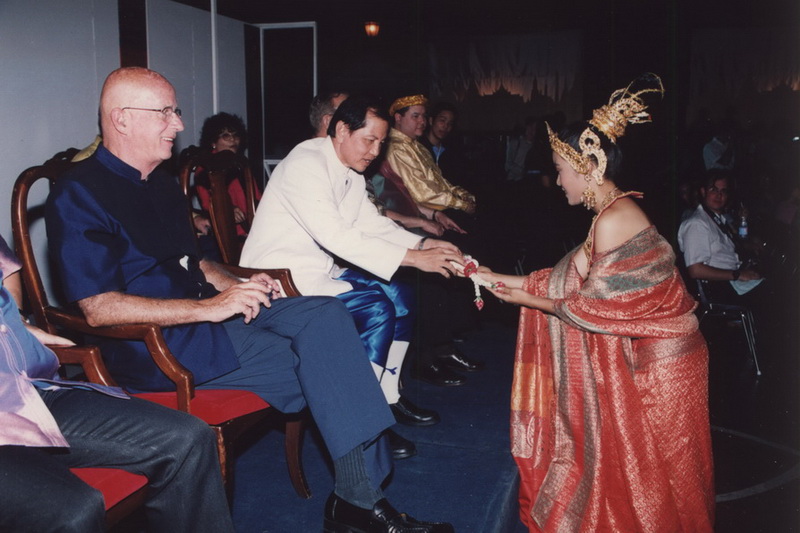 |
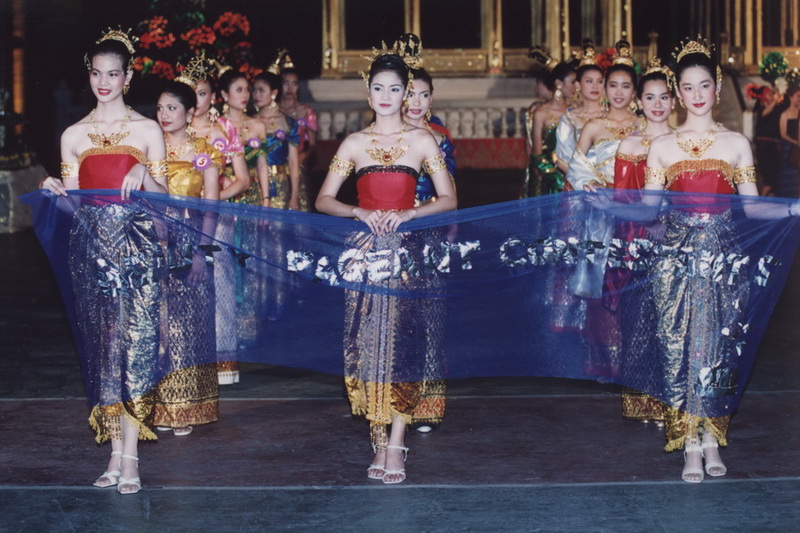 |
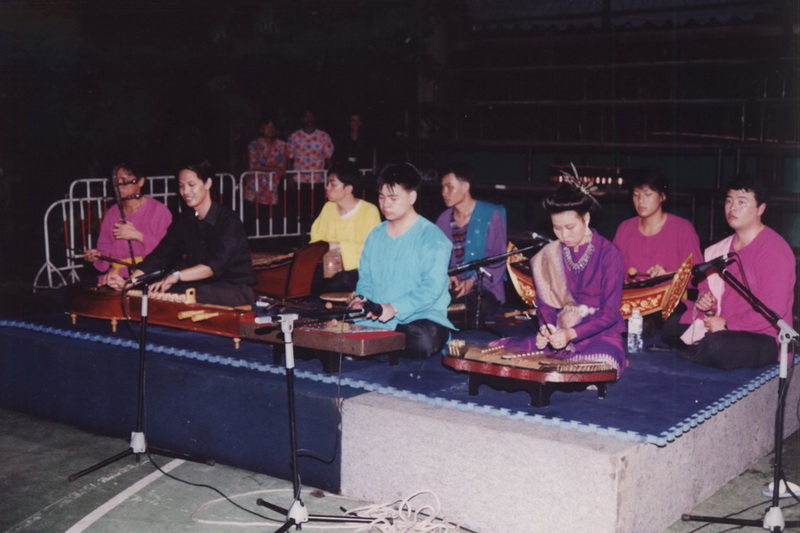 |
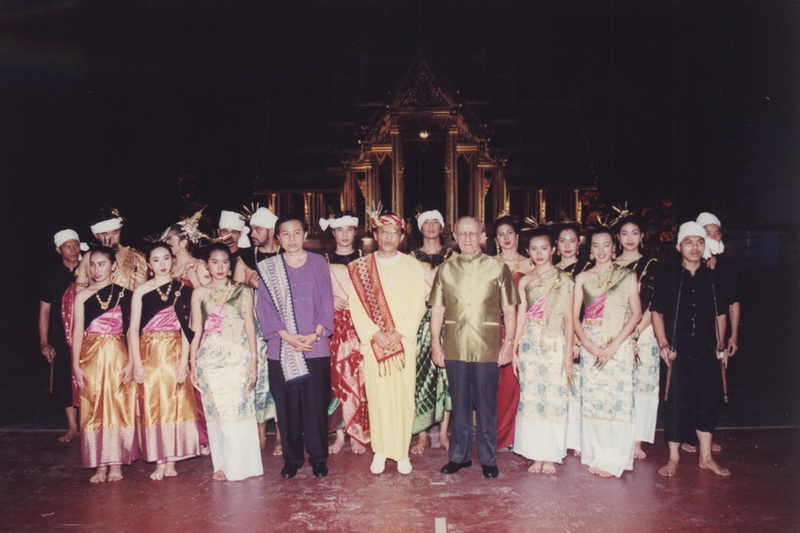 |
| 2003 | 2002 | 2001 | 2000 |
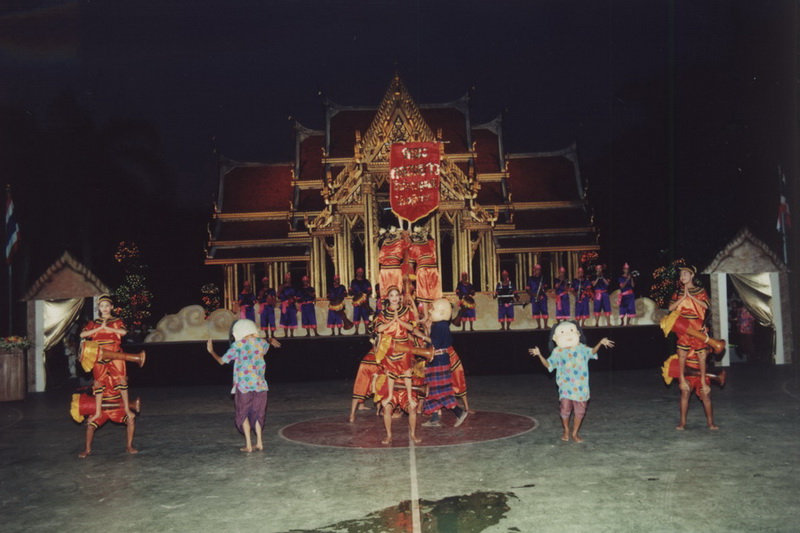 |
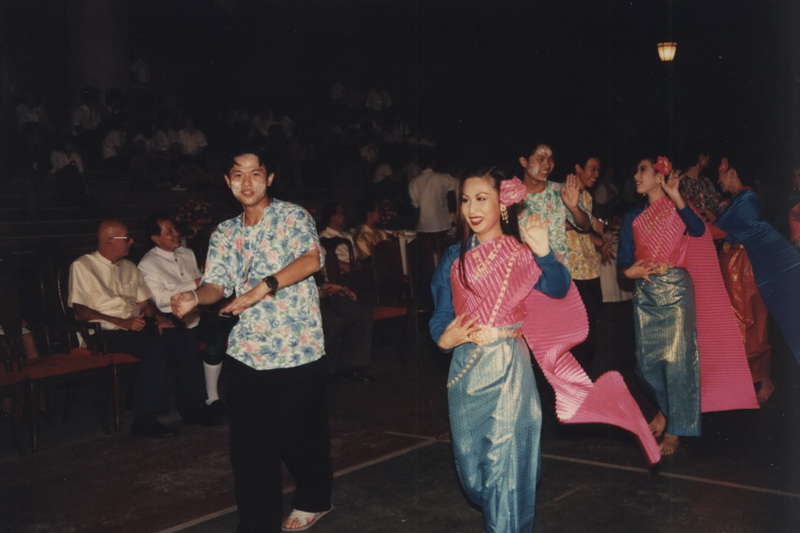 |
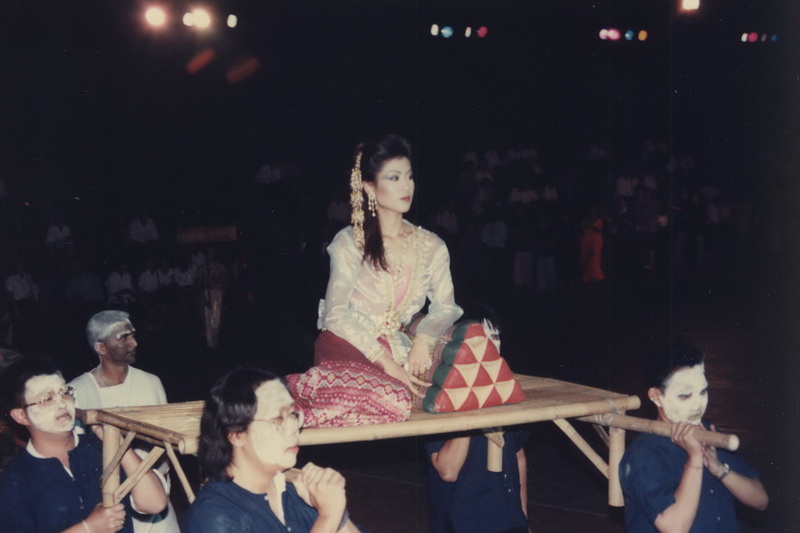 |
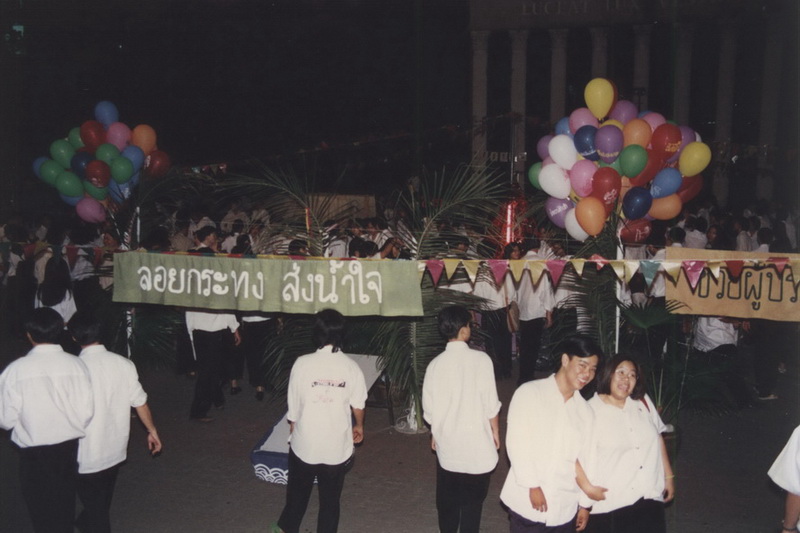 |
| 1999 | 1998 | 1997 | 1995 |
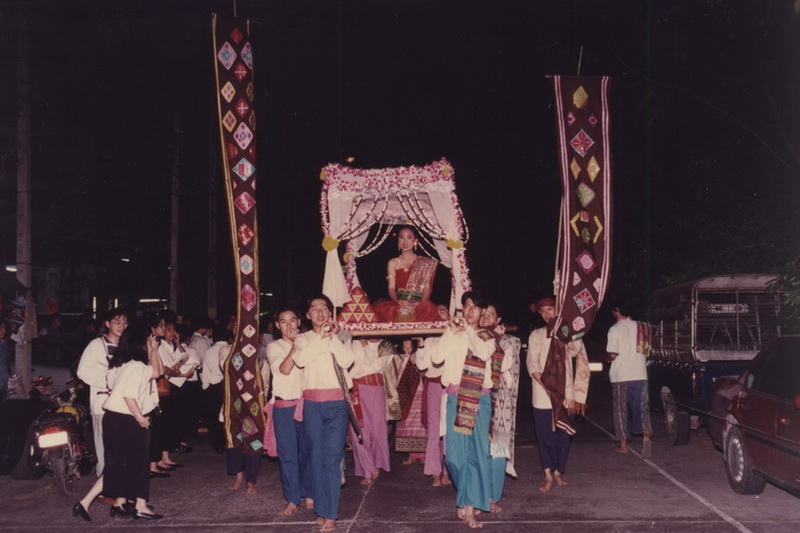 |
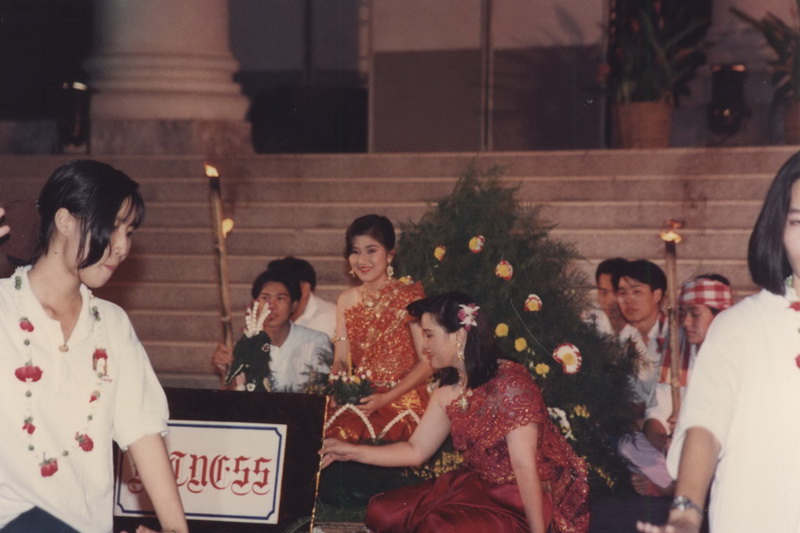 |
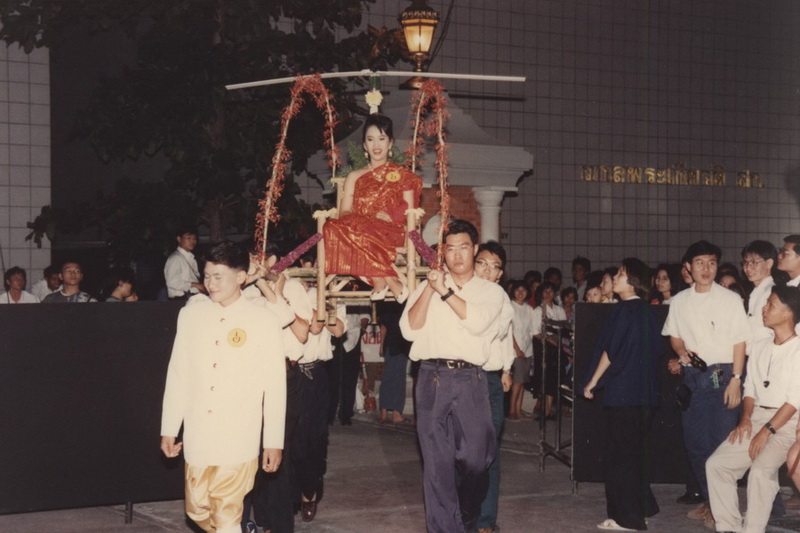 |
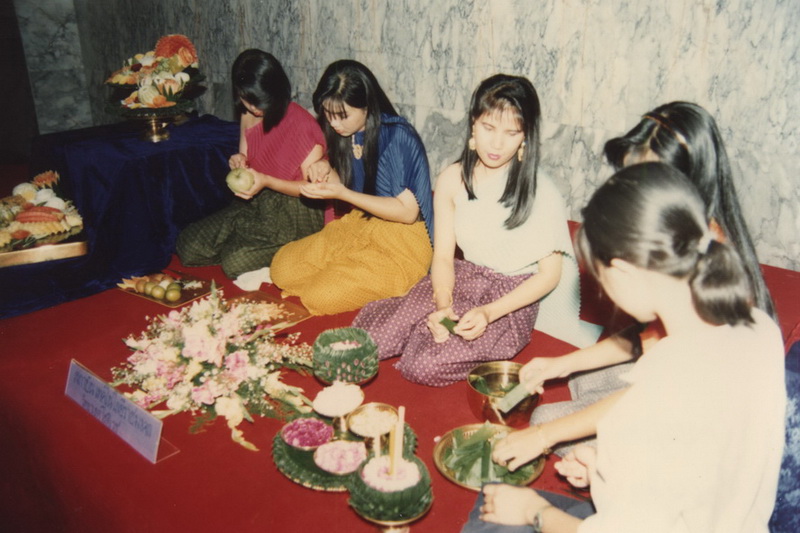 |
| 1994 | 1993 | 1992 | 1991 |
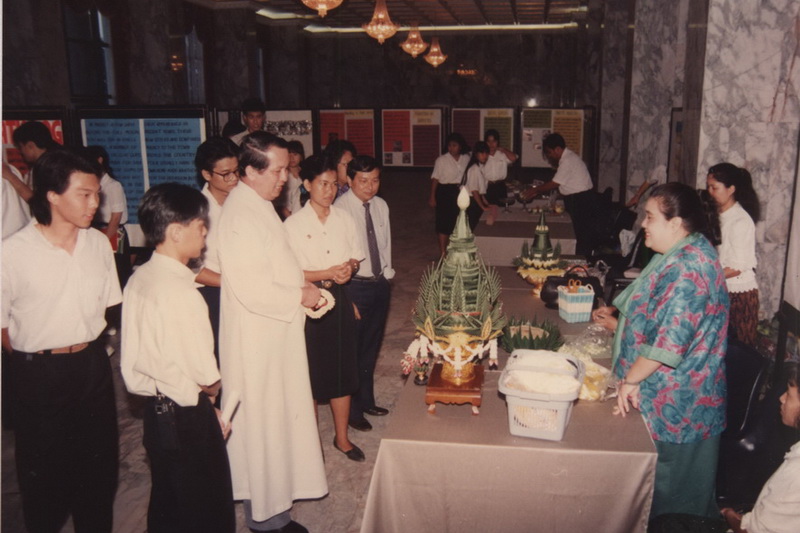 |
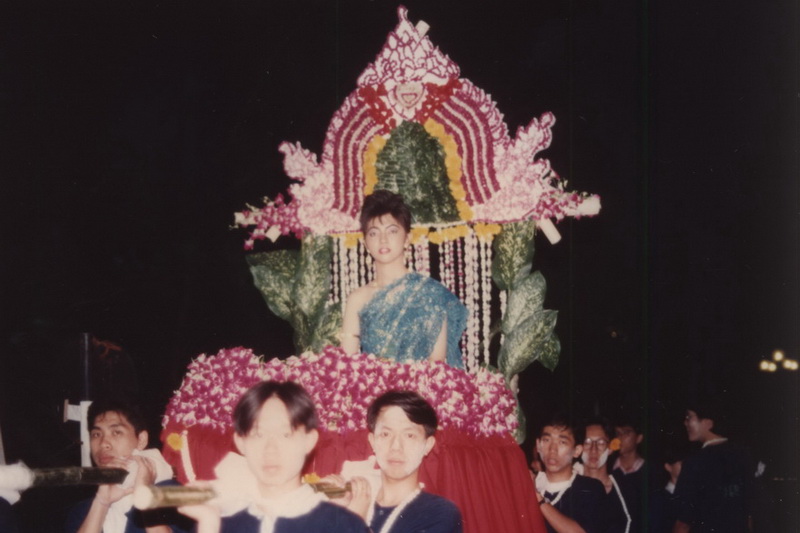 |
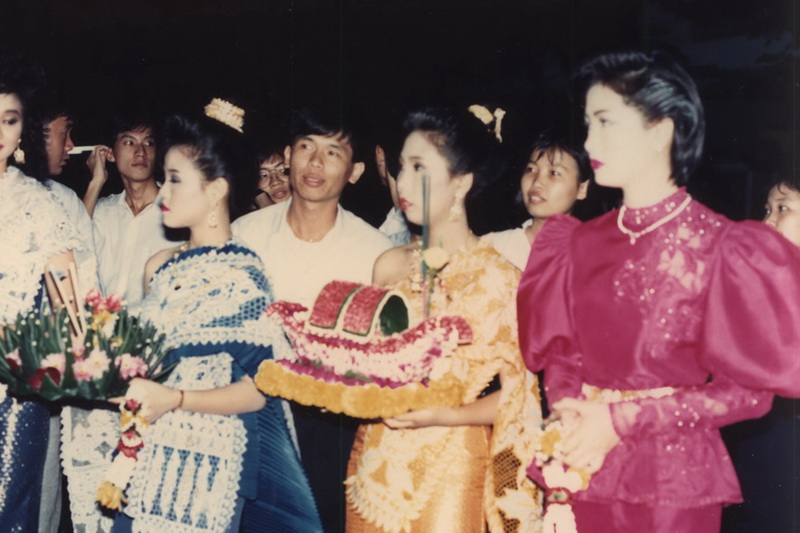 |
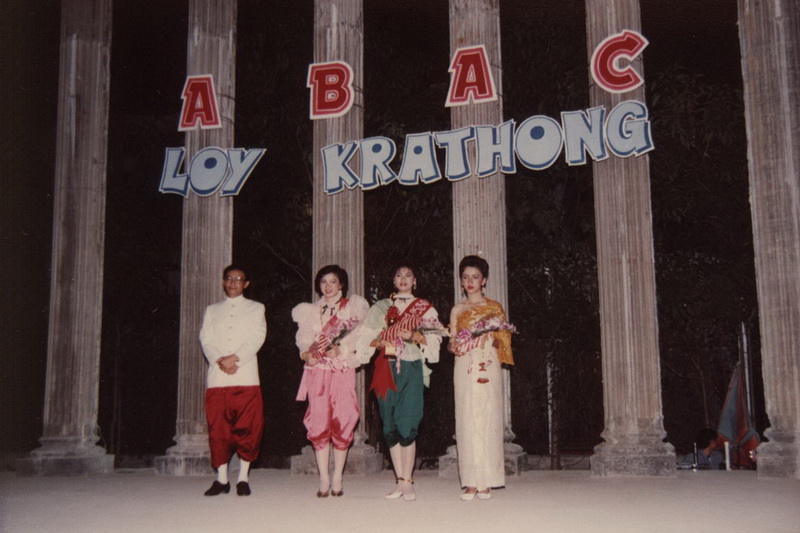 |
| 1990 | 1989 | 1988 | 1987 |
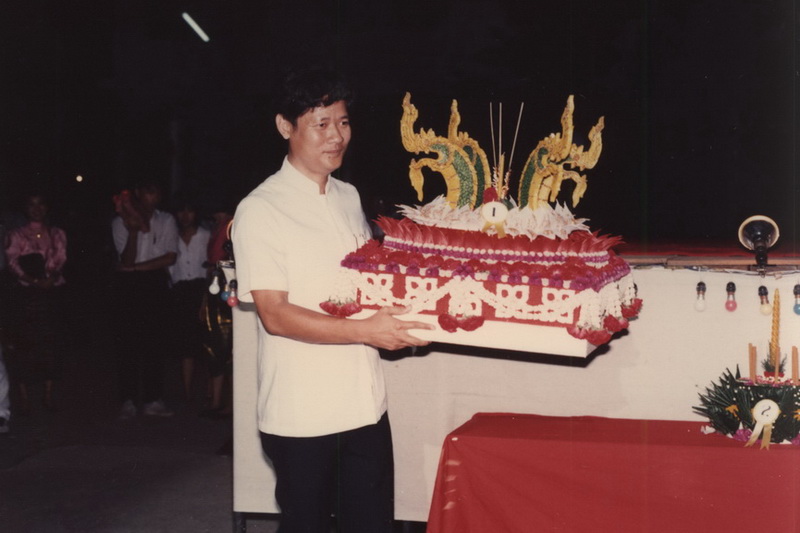 |
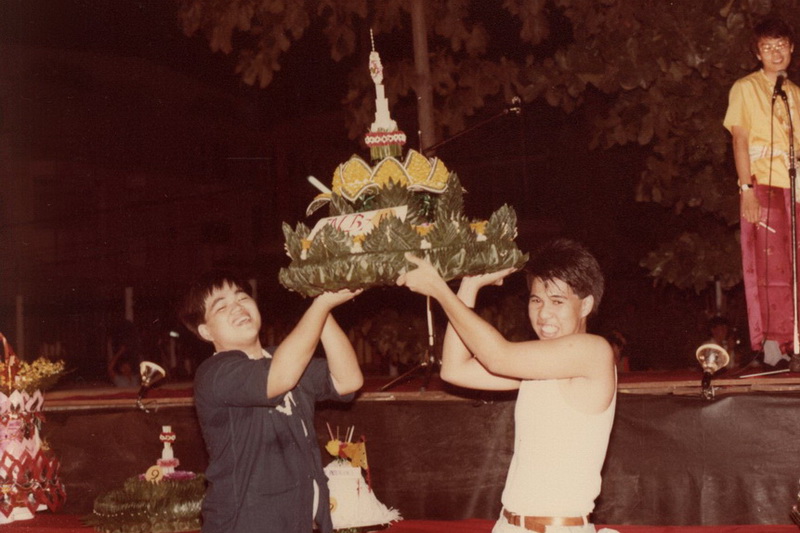 |
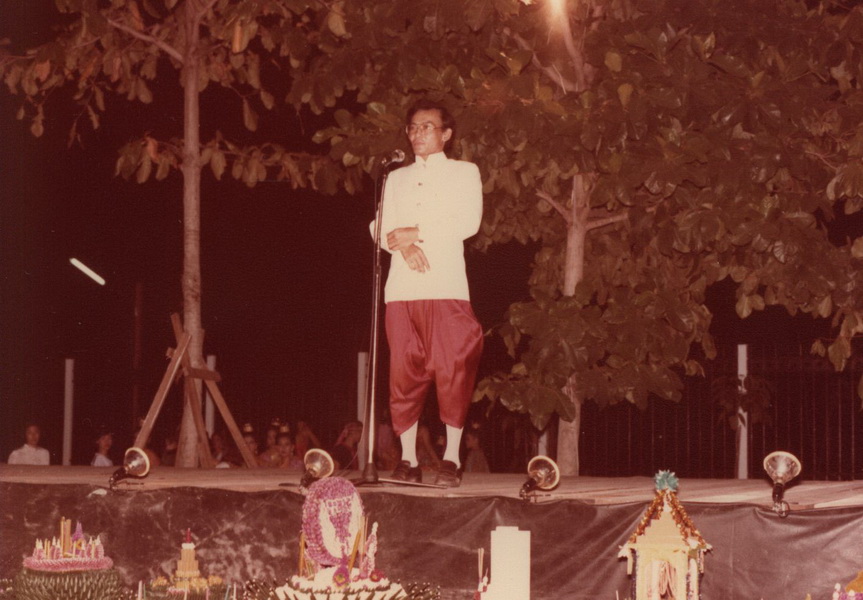 |
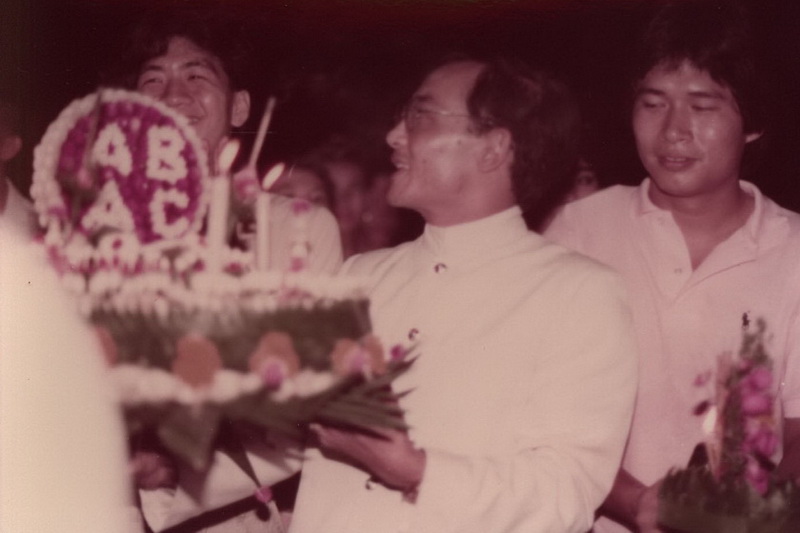 |
| 1986 | 1985 | 1984 | 1982 |
